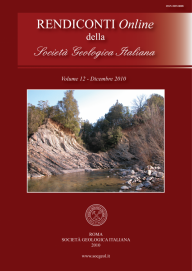
Un modello sedimentologico per gli interventi di ripascimento artificiale delle spiagge
Paolo Tortora (*)
(*) Dipartimento di Scienze della Terra, Università di Roma "La Sapienza", Piazzale Aldo Moro 5, 00185 Roma. E-mail: paolo.tortora@uniroma1.it
DOI: https://doi.org/
Volume: 12/2010
Pages: 13-25
Abstract
A sedimentologial model for beach nourishment interventions.
The Grain-size Nourishment Model (GNM) is a new numerical model that forecasts in 3D the littoral features following the nourishment intervention. Its predictions concern: (a) beach and shoreface morphology; (b) shoreline position; (c) geometry of the artificial deposit; (d) sediment amount for the intervention; (e) geographic distribution of sedimentological parameters (mean size, sorting, percentage of sand and mud).
Inputs for GNM are the topo-bathymetric and grain size data collected on the active morphological surface (dry beach and shoreface). These data must be previously submitted to a process of gridding with an external software in order to obtain the numerical format accepted in GNM: one grid matrix (topo-bathymetry), and one package of 25 grids maximum (a grid for each grain size fraction) which together reconstruct on each grid node a grain size frequency distribution. The model furnishes in output the numerical description of the artificial deposit through matrices (grids). The basic description regards the lower and upper boundary surface of the deposit (pre and post-nourishment surfaces), each defined by one topo-bathymetric grid and one package of 25 grids. Further data and grids derive from this basic description. The description includes real (pre-nourishment surface) and predicted (post-nourishment) data. For mapping the individual attributes of the deposit, grid values must be contoured using a commercial software.
Two variables govern the nourishment simulations: the grain size frequency distribution of the available borrow material and the shoreline advance requested in the project. Processing occurs by three distinct procedures of calculation based on the relationship between grain size characteristics, volumes, and geometric elements of the deposit. The first procedure (simple translation process) shifts the original surface (topo-bathymetric and grain size data) seawards, simulating a hypothetical nourishment with borrow sands having same grain size characteristics as local sands; the shift is equal to the required shoreline advance. The second modifies the translated surface based on the characteristics of borrow material really available. The third further varies it further by increasing or decreasing volumes in order to re-establish the correct position of the shoreline. The forecasts may be completed with the first procedure if borrow (B) and the local (L) sediments have the same grain size distribution (rare case), or with the second if B is different from L and the predicted shoreline satisfies project requirements, or with the third if it does not. Scenarios for more than one preliminary nourishment hypothesis (with different material and/or volumes) can be compared to choose the best solution for the live project. Theory and principles of calculation are presented in this paper together to an application of the model.
Keywords
Get Full Text